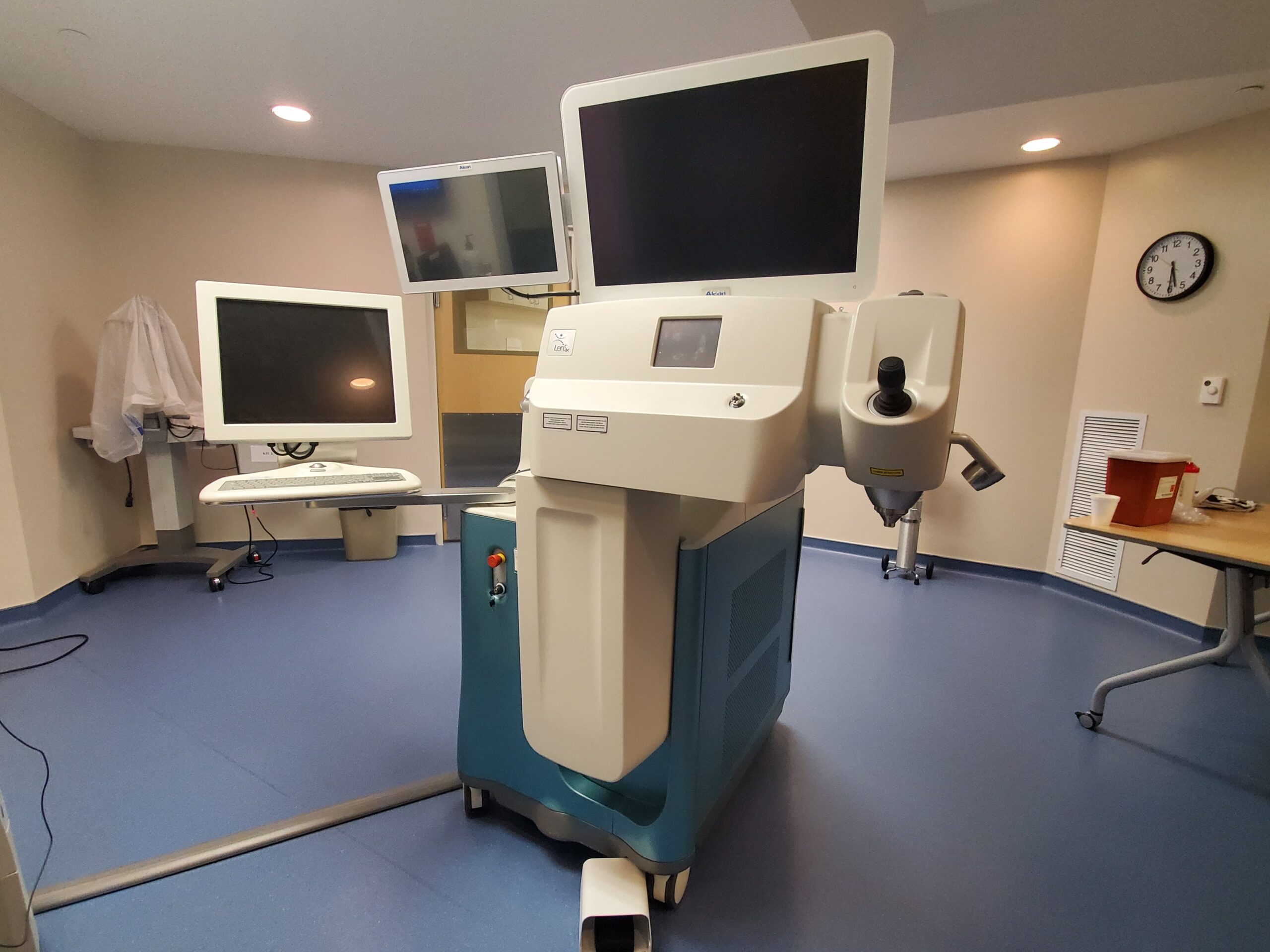Posted by: SightTrust Eye Institute in Refractive Surgery

Technological advancements in ophthalmology continually push the boundaries of what is possible in vision correction surgery. One of the most revolutionary developments in recent years is the introduction of the femtosecond laser for cataract and refractive lens replacement lens surgery. This cutting-edge technology has transformed the way these procedures are performed, offering a range of benefits that improve precision, making permanent vision correction a reality. SightTrust Eye Institute started offering this technology over a decade ago, and today 100% of our surgical patients opt to have laser cataract or laser refractive lens replacement surgery.
Cataract and refractive lens replacement surgery have long been fundamental procedures in ophthalmology, addressing both the clouding of the eye’s natural lens and the loss of reading vision that develop with age. Traditionally, these surgeries involved manual incisions and techniques that could lead to variations in vision results. However, the advent of the LenSx femtosecond laser has revolutionized these procedures by introducing a new level of precision and customization.
The LenSx laser utilizes ultra-short pulses of cool light to create precise incisions, gently divide the natural lens, and treat astigmatism. This technology achieves remarkable accuracy and reproducibility in every step of the procedure, leading to improved patient outcomes and reduced risks.
Benefits of LenSx laser technology include:
1. Enhanced Precision and Customization
The accuracy and precision of the femtosecond laser are unparalleled. Surgeons can now precisely control the size, shape, and depth of incisions, ensuring a tailored approach for each patient’s unique anatomy. This allows for optimal alignment of intraocular lenses (IOLs) and improving visual outcomes.
2. Reduced Risk of Complications
The automated nature of the laser-driven procedure increases accuracy. This is particularly important in cataract and refractive lens replacement surgeries, where even minor differences can increase the likelihood of patients still requiring glasses after the treatment. With the LenSx laser, the risk of complications such as corneal abrasions, uneven incisions, and inaccurate IOL placement is significantly minimized.
3. Minimized Energy Usage
Traditional cataract surgery uses ultrasound to break up and remove the lens; this older technology uses significant energy that can lead to increased swelling, longer healing, and less accurate results. The femtosecond laser uses light energy, which is vastly lower energy, leading to reduced swelling, quicker healing, and improved results.
4. Astigmatism Correction
Astigmatism is a common cause of blurred or distorted vision. The LenSx femtosecond laser can provide precise astigmatism correction during cataract or refractive lens replacement surgery to greatly improve your visual results.
5. Fast Recovery and Visual Rehabilitation
Thanks to the precision of the LenSx laser, patients experience faster recovery times compared to traditional methods. The accuracy of incisions and reduced trauma to the eyes allow for quicker healing, and patients tend to regain excellent vision and return to their daily activities sooner.
6. Enhanced IOL Placement
The accurate treatment created by the femtosecond laser enables surgeons to place intraocular lenses in the most precise position possible. This is especially crucial in premium procedures, such as when using multifocal lenses to create glasses-free vision for life. The LenSx laser’s ability to ensure consistent and accurate lens placement contributes to better postoperative vision quality.
7. Patient Satisfaction and Quality of Life Improvement
The combination of reduced surgical risks, precise customization, and faster recovery ultimately leads to higher patient satisfaction rates. Patients undergoing cataract or refractive lens replacement surgery with the LenSx femtosecond laser often report improved quality of life due to enhanced visual outcomes and reduced dependence on corrective eyewear.
8. Advancing Surgeon Skill and Training
The integration of femtosecond laser technology into cataract and refractive lens replacement surgeries requires the development of advanced surgical skills. Surgeons must not only train to harness the full potential of technology, but they also need to use lasers in most of their procedures in order to provide consistent results. This continuous pursuit of excellence contributes to the refinement of surgical skills and the evolution of ophthalmic practices.
The unparalleled precision, reduced risk of complications, and enhanced customization capabilities of laser cataract and refractive lens replacement surgery have transformed the way these procedures are performed and the outcomes they deliver. With faster recovery times, improved visual quality, and increased patient satisfaction, femtosecond laser has become a game-changer in the field of ophthalmology. As technology continues to advance, it is exciting to envision even further refinements and innovations that will shape the future of eye surgery, benefiting both patients and surgeons alike.
If you are interested in learning more about laser cataract or refractive lens replacement surgery, please call our office today to schedule an appointment. We would love to discuss how the femtosecond laser can change the way you see the world! Contact us at: (877) 878-7890 / info@sighttrust.com






